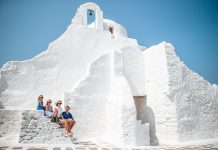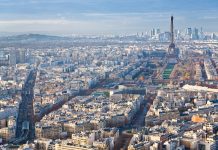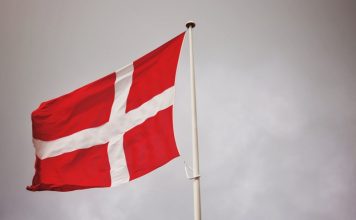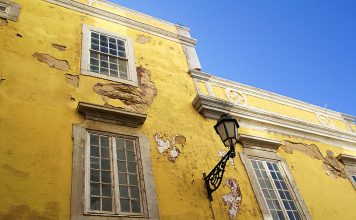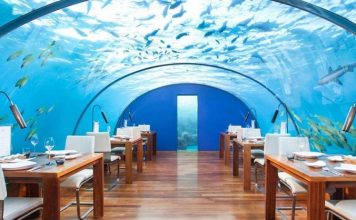Valladolid is a city in the Castile and León region of Spain. It is the capital and most populated municipality of the province of Valladolid. Valladolid is famous for its rich historical and cultural heritage, as well as its natural beauty and gastronomy.
What is Valladolid Known For?
Valladolid has over 1,000 years of history, and has been the seat of the kings of Castile, the court of the Catholic Monarchs, the birthplace of Philip II and the place where Christopher Columbus died. Valladolid has a majestic cathedral, a fortified royal palace in the city centre, monumental remains of the medieval walls, Renaissance-style palace houses, unique treasures of the work of José Zorrilla, emblems of modern architecture and one of the most diverse and vibrant festivals in Spain.
Valladolid is also famous for its location by the Pisuerga river and its tributaries, the Esgueva and the Duero, which provide scenic views and recreational opportunities. Valladolid is surrounded by natural parks, such as the Cañón del Río Lobos, the Hoces del Duratón and the Laguna de Duero, where visitors can enjoy hiking, biking, fishing and other outdoor activities.
Valladolid is also famous for its cuisine, which reflects its agricultural past and its geographical diversity. Valladolid offers a variety of dishes, such as lechazo (roasted lamb), sopa de ajo (garlic soup), queso de Valdeón (blue cheese) and yemas de Santa Teresa (egg yolk sweets). Valladolid is also known for its wines, especially those from the Ribera del Duero and Rueda denominations of origin.
Famous Drinks in Valladolid
One of the most famous drinks in Valladolid is the clarete, a rosé wine made from a blend of red and white grapes. Clarete is usually light and fruity, and can be dry or semi-dry. It is often served chilled or with ice. Clarete is typically consumed as an aperitif or with tapas.
Another famous drink in Valladolid is the ponche segoviano, a liqueur made from brandy, lemon peel, cinnamon and sugar. Ponche segoviano is usually sweet and aromatic, and can be served hot or cold. It is often accompanied by torrijas (bread pudding) or rosquillas (doughnuts). Ponche segoviano is a popular drink during Easter and Christmas.
Valladolid also has a variety of beers to offer, both local and international. Some of the local breweries are Milana, La Loca Juana and La Maldita, which produce craft beers with different styles and flavours. Some of the international beers that can be found in Valladolid are Guinness, Paulaner and Heineken.
Famous Sports in Valladolid
One of the most popular sports in Valladolid is football (soccer), as in most parts of Spain. The city has several football teams, such as Real Valladolid, which plays in the first division of the Spanish league, and Atlético Tordesillas, which plays in the fourth division. Football fans in Valladolid also support Real Madrid or Barcelona, the two biggest clubs in Spain.
Another sport that has a long tradition in Valladolid is rugby. The city has a professional rugby team called SilverStorm El Salvador, which plays in the first division of the Spanish league and competes in European tournaments. Rugby is also popular among young people, who play it in schools and clubs.
Valladolid also hosts several sporting events throughout the year, such as marathons, triathlons, cycling races and golf tournaments. Some of these events are:
- The Media Maratón de Valladolid: A 21-kilometer race that takes place in March along the riverbank and the historic centre.
- The Triatlón de Valladolid: A triathlon that takes place in July and consists of swimming 1.5 km, cycling 40 km and running 10 km.
- The Vuelta Ciclista a Castilla y León: A cycling race that takes place in April and covers 500 km through various towns and cities.
- The Open de España de Golf: A golf tournament that takes place in May at various golf courses.
Famous Streets in Valladolid
One of the most famous streets in Valladolid is Calle Santiago (or Calle Mayor), which connects Plaza Mayor with Plaza Zorrilla. It is a pedestrian street that offers a variety of shops, cafes, restaurants and bars. It is also where some of the main events of the Semana Santa (Holy Week) take place, such as processions of religious brotherhoods carrying floats with images of Christ and the Virgin Mary.
Another famous street in Valladolid is Calle Platerías, which runs through the old town and forms part of the old city wall. It is a narrow street that has many historical buildings, such as the Church of San Martín, the Palace of the Marquises of Valverde and the House of Cervantes. It is also where some of the most traditional shops and restaurants are located.
A third famous street in Valladolid is Paseo de Zorrilla, which leads to the entrance of the Campo Grande, a large park in the city centre. It is a wide avenue that has many modern buildings, such as the Casa Mantilla, the Casa del Príncipe and the Museum of Science. It is also where some of the most exclusive shops and boutiques are situated.
FAQs about Valladolid
- What is the best time to visit Valladolid?
The best time to visit Valladolid depends on your preferences and interests. If you want to enjoy the pleasant weather and avoid the crowds, spring (March-May) and autumn (September-November) are ideal seasons. If you want to experience the festive atmosphere and cultural events, summer (June-August) and winter (December-February) are also good options.
- How to get to Valladolid?
Valladolid is well connected by road, rail and air. You can drive to Valladolid from Madrid (200 km), Burgos (130 km) or Salamanca (120 km) via highways A-6 or A-62. You can also take a train from Madrid (1 hour), Burgos (45 minutes) or Salamanca (1 hour) via Renfe or AVE. You can also fly to Valladolid Airport (15 km) or Madrid-Barajas Airport (200 km) and then take a bus or a taxi to Valladolid.
- What are some of the must-see attractions in Valladolid?
Some of the must-see attractions in Valladolid are:
- The Cathedral of Valladolid: A Gothic cathedral that was designed by Juan de Herrera but never completed. It has a magnificent main facade, a tower and a museum.
- The Plaza Mayor: A square that was built in the 16th century and is considered one of the first examples of urban planning in Spain. It has a porticoed perimeter, a town hall and a statue of Count Ansúrez.
- The National Sculpture Museum: A museum that displays sculptures from different periods and styles, ranging from Romanesque to Baroque. It has works by Alonso Berruguete, Gregorio Fernández and Juan de Juni.
- The Campo Grande: A park that covers 11 hectares and has a lake, a fountain, a rose garden and a pavilion. It has various species of trees, flowers and birds.
- The Casa de Colón: A house that was once the residence of Christopher Columbus and where he planned his second voyage to America. It has a museum that exhibits maps, models and documents related to his life and discoveries.
See more Famous Places in Spain:
- What is Seville Famous For?
- What is Cadiz Famous For?
- What is Huelva Famous For?
- What is Caceres Famous For?
- What is Granada Famous For?
- What is Madrid Famous For?
- What is Barcelona Famous For?
- What is Valencia Famous For?
- What is Almeria Famous For?
- What is San Sebastian Famous For?
- What is Santanter Famous For?
- What is Salamanca Famous For?
- What is Oviedo Famous For?
- What is Valladolid Famous For?
- What is Cordoba Famous For?
- What is Alicante Famous For?
- What is Bilbao Famous For?
- What is Palma Famous For?
- What is Murcia Famous For?
- What is Zaragoza Famous For?

